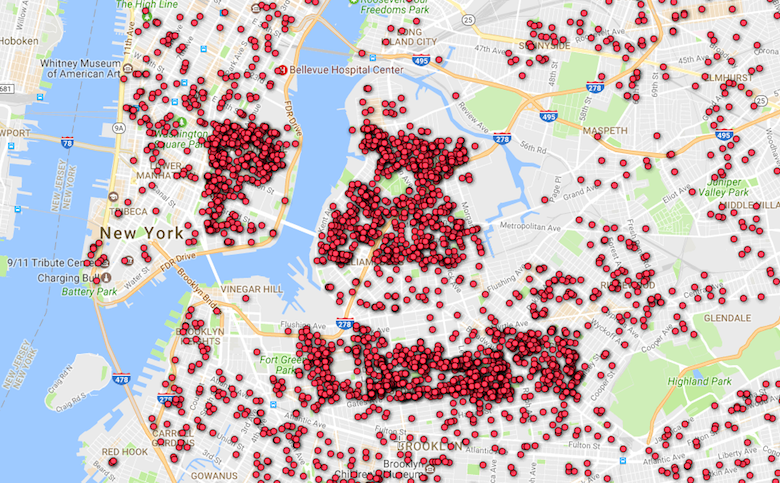Editor’s note: We kicked off our first annual Food Loves Tech event last summer in Chelsea—here’s a recap. We’re bringing a taste of the food and farming future back this year, but just across the East River at Industry City. Leading up to the event, this story is part of an ongoing series about technology’s effects on our food supply.
A sustainable urban food system often summons images of community gardens or rooftop farms. If you follow our sites, then you know that foraging can play a role, too.
So if you wanted to enjoy the bounty of your neighborhood in your next salad, where would you begin? Falling Fruit is a citizen mapmaking project that’s built an interactive, comprehensive map of edible trees to “facilitate intimate connections between people, food and the natural organisms growing in our neighborhoods.” Using baseline tree inventory data from city parks departments, this resource functions as an open-source platform to which anyone can contribute by simply dropping a pin to identify a useful species.
https://www.instagram.com/p/37eXTjQ1RZ/
Thousands of food trees across the city and surrounding areas are documented on the map. Some of these useful tree varieties include honey locust (Gleditsia triacanthos), which produces a crisp young green pod that can be used as a vegetable, common hackberry (Celtis occidentalis), whose pea-size berries are edible, and small-leaved linden (Tilia cordata), which produces nutritious heart-shaped leaves in the spring and summer buds that make a nourishing bedtime tea.
As much as shrubs or smaller plants, trees play also an essential role in ensuring healthy ecosystems and providing food we can eat. They’re perennial, hardy and require little maintenance once established. These characteristics make them well-suited to thrive in the most inhospitable urban environments, aka along city streets.
This summer is the perfect time to explore your cityscape and celebrate this most local of local food, especially with mulberry season quickly approaching. Of course, always be sure to cross-reference your spoils to make sure you have the proper ID. If you’re a foraging newbie, here are some additional resources and tips, too:
- FYI, foraging in city parks is technically illegal.
- Wild foods have their limits. Consider sustainable harvesting techniques before you cut or pick.
- Soil contamination exists. Read up to know what’s a risk.
- Follow our expert foraging writer Marie Viljoen for additional local foraging info, inspiration and even guided walks.



